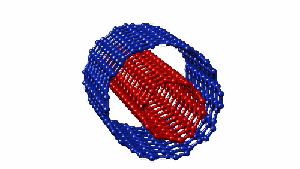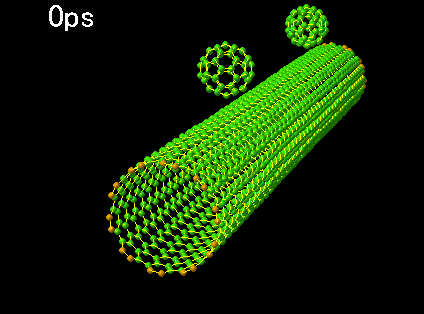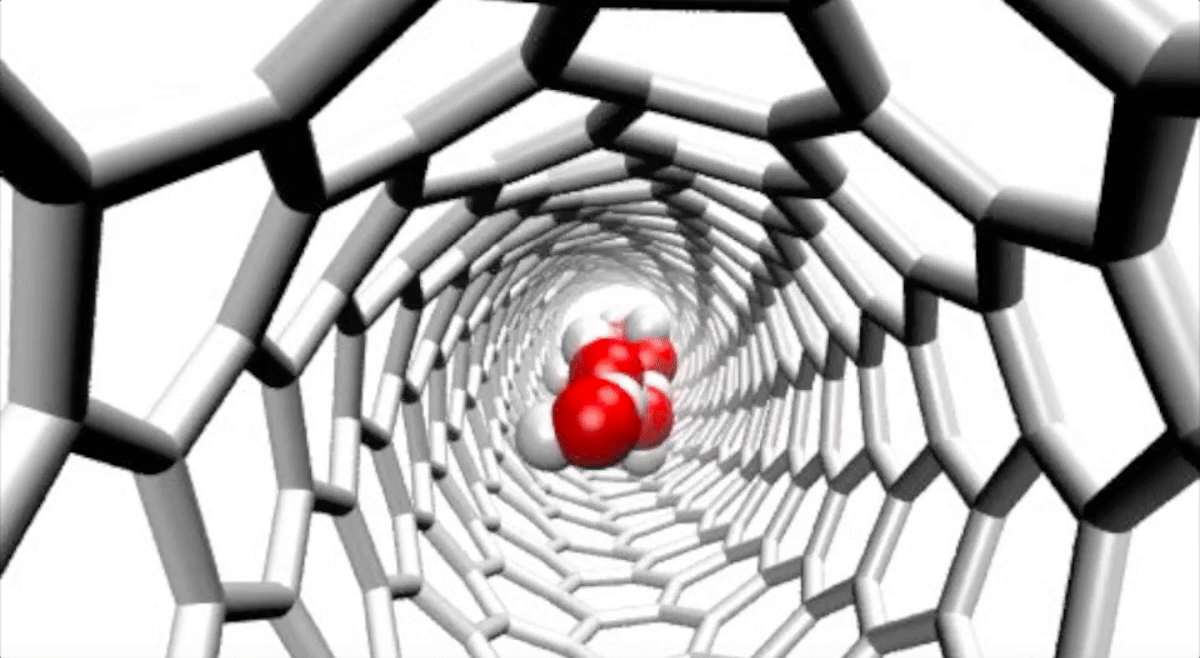_Part of the process (discharging) for electric nanotubes
Graphene nanoribbons inside multilayer CNTs nanotubes or multilayers are an extremely good electrical conductor
Researcher and author: Dr. ( Afshin Rashid)

Note: Graphene nano-ribbons inside CNTs or multilayer nanotubes are an extremely good electrical conductor and a semi-conductor that can be used in integrated circuits (ICs), small chips with millions of transistors .
The increase in the length of the graphene nano-ribbon at low voltages causes a decrease in the electric current in the nano-tubes and eventually creates a gap in the conductivity curve. The reduction of electrical conductivity can be caused by the effects of quantum interference, and the governing conductivity of the structure in the presence of a gap in the conductivity is described based on resonant tunneling. On the other hand, with the increase in the width of the graphene nanoribbon along with the increase in the connection points in the CNTs nanotubes with the central region, the electron flow paths to the central region of the CNTs multilayer carbon nanotubes increase and the conductivity increases . In addition to having many of the electrical properties and conductivity of carbon nanotubes, graphene sheets have unique electrical transport properties such as the half-correct quantum Hall effect, minimum conductivity, etc. Also, graphene sheets have a planar structure. which are more changeable compared to carbon nanotubes. Charge carriers in graphene show behavior similar to massless fermions . The above characteristics have caused graphene to be considered as a suitable candidate for nanoelectronic structures.


Graphene strips with a finite width are known as graphene nanostrips, which are divided into armchair and zigzag types according to the shape of their edges. It is possible to make graphene nanostrips with different widths. All graphene nanostrips are of zigzag type. are metallic, while armchair graphene nanoribbons can exist in both metallic and semiconductor forms with a certain energy gap, depending on the width of the ribbon. The graphene nanoribbon has armchair-type edges, which are limited to these two semi-unfinished metallic nanoribbons from the left and right. In both structures, by increasing the number of single cells in CNTs multi-layered nanotubes, the electronic states adjacent to the Fermi plane are reduced and a threshold voltage is created in the current-voltage characteristic curve and a gap is created in the conductivity curve.
Conclusion :
In CNTs carbon nanotubes, the physical origin of such behavior can be caused by the interference effects of electron waves in the carbon branches of the graphene strip. In a certain range of electron energy, electron waves create destructive interference and the electric current is weakened. Therefore, by increasing the length of the GNR graphene nano ribbon, a gap appears in the conductivity curve of the GNR graphene ribbons inside the multi-layered carbon nanotubes of CNTs.
Researcher and author: Dr. ( Afshin Rashid)
Specialized doctorate in nano-microelectronics


